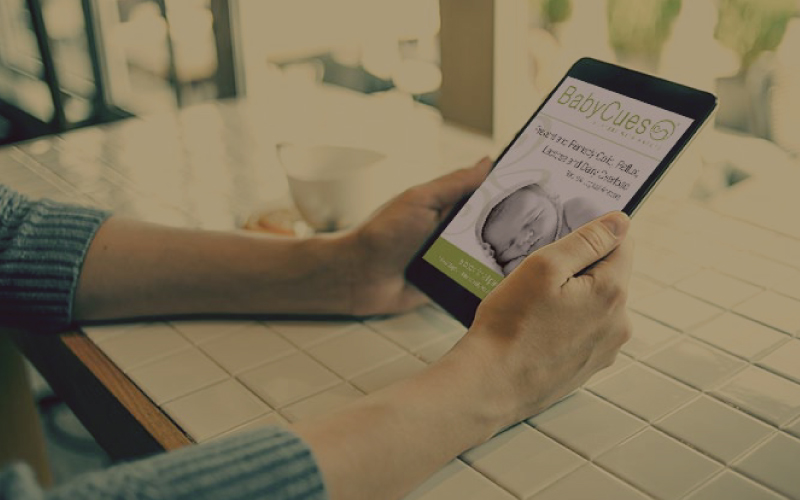BeCalm, BeCalm, BeCalm

Article Published in The Natural Parent Magazine
Over the years of working with newborns, there is one aspect of intimate care that stands out as essential. Creating the feeling of being in unison with the baby – of ‘being one’. It’s no secret that newborns, like adults, are very aware and sensitive to the emotions around them, especially from the person holding them. It’s also no secret that daily life with a newborn, a toddler, or two, and life in general can have us disengaging from being mindful of this energy of oneness. Yet often, taking a breath, a moment to become present with your baby is all they, and you need to foster calm.
Sound Bonding
Research shows that baby’s ears form at eight weeks in gestation and are working completely at around twenty-four weeks. At this stage voices are recognised even though the ears are covered with a protective waxy coating of vernix. Bonding through hearing and vibrational tone has begun. Using this to your baby’s benefits by providing the same ‘bonding sounds’ during pregnancy that you will use in their postnatal life can help to harmonise positive mental, and physical health for all.
In the early months, babies naturally know how to vocalise pain. However, they can often keep crying long after the discomfort has finished. Sound Bonding can be used as an ‘off switch’ for them. By using a different tone, or pitch to your baby’s cry, you can often break their crying cycle, which can limit the ill effects of high cortisol levels in the brain. It can also bring down the deliverer’s own heart rate, thereby reducing the possibility of anxiety transference.
Hum Baby
This calming technique can either be performed when you are away from your baby or while you are holding them, bringing your mouth close to their ear. It’s very simple – you just begin humming at a higher pitch (not louder) than your baby’s cry, working your way down through the octaves, repeating if necessary. Once the crying has stopped or calmed down a little, keep your hum at the lowest tone you can. Newborns LOVE low tones. You can also use the ‘shhh, shhh, shhh’ noise in this way but personally I feel the hum is less harsh.
If you are offering the Hum Baby during pregnancy then a consistent hum in one tone can be a good place to start. After teaching the Hum Baby for many years I was fortunate enough to be able to offer it to my son while pregnant and to this day, he’s two years old now, all I have to do ‘Hum Baby’ and he almost instantly responds with a more peaceful disposition and we feel our oneness again – it’s so precious.
Tongueless Raspberry
The Tongueless Raspberry can be used when close or away from bubs, and combines the Hum Baby and the good old childhood fun of blowing raspberries, but without the tongue poking out. Purse your lips and blow out, as you would when ‘making a raspberry’. Your lips will vibrate. At the same time, like the Hum Baby, produce a higher-pitched hum than the crying from the back of your throat, slowly bringing your pitch down the octaves. Obviously when you are providing this close to baby’s ear you want to provide a quite Tongueless Raspberry. Distance from them allows you to be more abrupt, dramatic, shrill and loud with your tone, using it more like a sudden distraction. Your baby will often do a double-take at this point, stopping their cry which is when you offer another BeCalm technique like sucking.
White Noise
The best way to describe white noise is a combination of all the tones a human ear can hear. White noise is about masking any distracting sounds. When provided in a gentle and continual way, this creates a relaxing of one’s body and emotions. For this purpose, white noise can be good for your baby.
Conversely, research also shows that you should be aware of how often you use white noise to establish calm. In April 2003 a study monitored the auditory centre of rat pups. They exposed them to continuous white noise loud enough to mask normal environmental sounds but not loud enough to damage their hearing. It was found that white noise delayed their auditory development, although development matured to normal adult levels when the continuous background noise was stopped. One researcher observed that “It is probably not a good idea to intentionally expose babies and infants to nonstop white noise but everyday exposures are probably not harmful for most children.” A modicum of white noise may be more appropriate rather than all night every night, or every time bubs goes to bed.
If your baby is completely inconsolable, turn on the vacuum cleaner, hair dryer, tap or clothes dryer. The white noise from these may drive you up the wall but they can also produce miracles of calm for some babies. Use these as one of your last resorts so you do not have to use them all the time.
Movement
Most of us know that newborns quieten down when we keep them on the move. However, when the movement is stopped the crying often resumes. This is because motion keeps the ingested air and uncomfortable waste on the move, so the baby doesn’t necessarily feel as much discomfort. But this solution for calm only really deals with the symptom, not the cause of the unsettled behaviour. Interestingly, when we move bubs productively and slowly, thus keeping overstimulation to a minimum, air remains in bigger pockets which means it’s easier for them to release as a burp.
The Jiggle
Most parents jiggle their babies up-and-down in a short movement in the hope of creating instant peace and they often succeed. However, because this only breaks wind into smaller pockets, making it harder for your baby to release it, I highly recommend only using The Jiggle in an emergency to provide peace in those times of necessity. Using The Jiggle in this way often keeps the wind moving long enough for your baby to settle, enabling you to provide them another BeCalm method like sucking – my favourite method for fostering calm.
If your baby is completely inconsolable, turn on the vacuum cleaner, hair dryer, tap or clothes dryer. The white noise from these may drive you up the wall but they can also produce miracles of calm for some babies. Use these as one of your last resorts so you do not have to use them all the time.
Rhythmic swaying
Hold your baby either over your shoulder, over your arm, or in front of you while making a large but gentle swaying movement from one foot to the next. This movement is slower and more even than The Jiggle and is less likely to break down air pockets while soothing baby. Hone this as your instinctive habitual move to help bring calm because it can be magic. Remember to use it in combination with the Sound Bonding techniques.
BeCalm yourself
Keeping calm is paramount for your baby, yourself and everyone else around you. By using the methods here both parents can consciously manage their responses, which of course benefits everyone. However, with sleep deprivation pushing your mental function out of balance, you may sometimes find that these techniques don’t help. When this happens pass the baby to someone else, or phone someone to come to the house, or place your baby in a safe setting and walk away – you are being a good parent by doing this. Re-group, even sleep if you have the help and then offer your baby the positive energy that is needed. If you are constantly struggling to find a positive emotional state, talk to your health professional about this. If they do not listen or offer help, find another that will.
Finding calm in the moment
- Listen and sing to music. It will often lift or shift your mood.
- Move to another room. Sometimes new walls bring new resolve. Even going outside with each other for fresh air is revitalising and calming.
- Talk to your baby about how you are feeling. They will listen for hours as you moan about the lack of sleep you have had, but do try to use a soothing voice to keep them calm. Your soothing tone can benefit your own emotional state too.
- Relieve stress in the moment. Raise one hand to your face, palm facing. Put your thumb by one nostril and your index, ring or little finger by the other. Gently block one nostril with your thumb. Breathe in slowly through the other nostril. Hold for a second, concentrating on the stillness, then remove your thumb, at the same time blocking your other nostril with your finger, and breathe out slowly. Slowly breathe in using the same nostril and hold. Then release your finger, reapply your thumb and breathe out. Repeat this as often as you need but at least eight to ten times is beneficial. If you have older children present at the time of stress, involve them in this too. They may love it, and believe me it works remarkably well for everyone. It is even good to use in those stickier moments of relationships.
- Research now shows us that our facial expressions influence our emotions. Fake a smile right now and feel the subtle change in your feelings.
- Remember to create laughter between you and your partner and if you’re not good at this then hire a comedy DVD now and then.
i. Chang E, Merzenich M, PhD. Science Journal, published 18 April 2003




